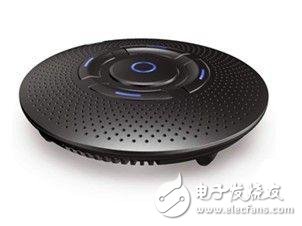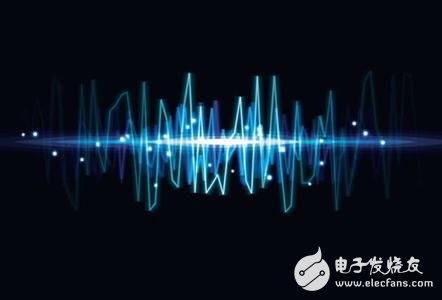In today's mobile phone market, whether it is Xiaomi, or related products from leading manufacturers such as Apple and Samsung, it shows the importance of music playback and audio quality in mobile phone design. Higher audio quality and higher power speakers not only require the system to have a more advanced data converter, but also pose a huge challenge to the design of the lithium battery power supply, which requires Wolfson to adopt the "audio center" (audio hub) design ideas to help mobile phone designers solve these problems, reduce costs and simplify system design. Opportunities and challenges of high quality audio In a traditional mobile phone design, only one mono speaker is needed to play the ringtone, which may only need to play for a few seconds every few hours. But the latest models of multimedia mobile phones may support movie playback, mobile TV, gaming and other multimedia features, and the use of stereo speakers in the design of the system, so the system is designed not only to consider the audio converter, but also to reduce power consumption Technology is combined with it. However, stereo speakers require twice as much power as a mono speaker and need to remain active for a long period of time. A 10 minute movie clip consumes 120 times more battery power on a stereo speaker than a 10 second mono ringtone. Today's consumers are also expecting higher volume, and 1W output power speakers are now quite typical requirements, and this puts higher demands on battery energy. Adding functionality to a mobile phone usually involves adding circuitry, which means that the space left for the battery is smaller than ever before, as the size of the phone shrinks. Because of the need to add more, very power-hungry audio features to the phone while using as small a battery as possible, cell phone designers have to carefully review the causes and inefficiencies of each power consumption on the phone, in each Possible places to save battery energy. This requirement for longer battery life is driving the trend toward Class D power amplifiers, which eliminate the largest sources of inefficiency in audio circuits. The ever-shrinking overall size is also driving the integration of mixed-signal audio functions, but this integration also presents new challenges because of improved audio quality without adding power or requiring additional external components (such as voltage regulation). Or passive components). A new generation of 'audio center' devices is gradually addressing this complex design challenge while addressing improved audio quality, minimizing power consumption in both work and standby modes, and reducing PCB area and component count. Audio center came into being Portable multimedia devices, such as mobile phones, typically contain analog and digital sources that use different data formats that must be converted and appropriate before being output to the real world through different transducers (such as low-power speakers, high-power speakers, and headphones). the mix of. In order to save space, cut costs and reduce design complexity, it is beneficial to concentrate all of these audio processing functions on one device (ie 'audio center'). Digital data sources can also exist in different data formats, word lengths, and sample rates. Since the phone usage mode typically only requires the audio center to process mono 8 kHz PCM format data, the integrated digital music playback feature requires the audio center device to handle different sample rates, word lengths, and data formats (eg, stereo 16-bit 44.1 kHz I2S data). A flexible digital audio interface and clocking solution in the audio center, combined with a Hi-Fi quality data converter, eliminates the need for additional mixed-signal components for digital music playback on mobile phones. The audio center must be able to connect analog signals with different amplitudes, source impedances, DC offsets, and bandwidths, such as FM receivers, microphones, transmit/receive voice data, ring tones, or Hi-Fi line inputs. The flexible input configuration supports these different signal characteristics in different system architectures while minimizing pin count, space savings and cost reduction. Mixing in the analog domain of the audio center can eliminate sample rate conversion difficulties, and flexible hybrid channels can lead to the emergence of new application features. Devices such as the WM8983 and WM8985 allow arbitrary mixing of microphone inputs, digital music, FM receivers, and received voice data, and provide the ability to re-digitize this mixed audio, which enables the implementation of functions such as karaoke recording. . Energy-saving power supply design for audio center The power requirements for each audio function in the above signal chain are the most different in audio center devices. There are typically three to four independent power domains, each with its own unique voltage/current requirements and noise characteristics. Audio center devices require a very careful design to work with the different limitations of these power supplies. Minimizing power consumption without sacrificing audio signal quality is the key to providing Hi-Fi quality music for portable designs with reasonable battery life reduction. Each power domain must use different power-saving technologies. Since lowering the digital part of the supply voltage does not affect the audio quality, the digital core will use as low a voltage as possible to conserve power. Using these low-voltage DC/DC converters can greatly improve power conversion efficiency compared to linear regulators. Power supply ripple caused by high-frequency switching of DC/DC converters can be more easily suppressed by digital circuits. An analog block requires a stable supply voltage to keep the noise level as low as possible. In a similar way, using a low-voltage digital I/O buffer supply will consume less power and the audio quality will not be affected, although for some practical reasons the supply voltage is sometimes higher than the digital core. Voltage (eg, to maintain a consistent level of signaling voltage between devices that communicate with each other). Unlike digital functions, analog signal processing components such as ADCs, DACs, mixers, amplifiers, and microphone interfaces are very sensitive to noise. The signal-to-noise ratio can be improved by increasing the analog supply voltage, but at the cost of increased power consumption. System designers must make reasonable compromises based on their own audio quality and power goals. Maintaining a stable and clean analog power supply is also important to prevent power supply noise and reduce audio quality. Although good design and differential techniques can improve the power supply rejection ratio (PSRR), a high PSRR linear regulator is typically used to power the analog circuitry on the audio center. It is also important to have a sufficient margin between the regulator's output voltage and the minimum input voltage to maintain a high PSRR level when the battery is discharged. Analog voltages between 2.7V and 3.0V in portable audio applications are quite typical. The most effective strategy for power saving analog circuits on the audio center is to provide flexible and granular power management control so that circuits that are not necessary for a given application scenario can be turned off. For example, most audio centers have at least 2 ADCs and 2 DACs on the chip, but the voice recording function requires only one ADC, PCM voice calls require an ADC and a DAC, and MP3 playback requires the use of two DACs. As long as there is a trade-off between power consumption and audio quality in a particular circuit, a low-power mode can be used so that when quality requirements are reduced (as in voice communications), performance can be appropriately reduced to save power. As the complexity of audio center devices continues to grow to match the ever-increasing performance of handsets, the number of possible device configurations is also growing, and low-level control of different blocks becomes necessary to avoid wasting power. High quality data converter combined with Class D drive Traditional Class AB speaker drivers typically consume more power than they transmit to the speaker, which reduces battery life and can cause the device itself to overheat. Class D Speaker Drivers - The technology used by speaker drivers has so far been the biggest factor affecting overall efficiency. For example, a 40% efficient Class AB speaker driver that provides 1W of power per channel requires at least 5W of power from the battery, with 3W being converted to heat dissipated on the device. In some applications, all other audio-related power consumption is two orders of magnitude lower than this, making the speaker driver a major source of inefficiency and unnecessary battery power consumption. Class D speaker drivers are increasingly being used to increase efficiency, extend battery life, and simplify thermal management issues, which can limit device functionality and increase cost. In portable applications that support movie playback, gaming or other multimedia functions, the speakers need to remain active for a long period of time, and Class D technology is very effective in extending battery life. Even phones that have been relatively short-lived until recently when the speaker's working hours (such as when playing ringtones) have now begun to support speaker and multimedia streaming features that require longer use of the speaker driver. As a result, Class D amplifiers are increasingly replacing Class AB amplifiers in handset designs. Burst and Tick Suppression - The audible pops and ticks produced during audio circuit setup can reduce the user experience and often require significant effort to eliminate these noises during system development. Audio center devices with integrated popping and ticking suppression circuitry further reduce development time and improve perceived audio quality. Interestingly, high quality audio that is immune to popping, ticking, and other unpleasant noises also has the effect of improving the quality of the video image. to sum up The well-designed audio center device integrates data converter and power management functions to provide Hi-Fi audio and more mobile phone functionality with a smaller form factor and longer battery life. For handset designers, the added benefit of ease of use, fewer component counts, and flexible power management performance is the primary basis for these devices. The combination of high-quality audio codecs and Class D amplifier technology is very effective in extending the battery life of portable multimedia devices, allowing new functions such as gaming and TV streaming to work longer. High levels of silicon integration offer significant benefits in terms of smaller PCB area and component count, but as Hi-Fi audio becomes more important, the previous priority was not very high for phones designed for voice communication only. Other challenges must now be addressed. Higher levels of integration provide real benefits to end users, but audio quality must always be maintained. Mixed-signal designers must maintain audio quality throughout the signal chain, keeping in mind the limitations of cell phone batteries. With a good design, a better audio experience does not necessarily result in additional power consumption or the cost of many additional components.
China leading manufacturers and suppliers of Wooden Hanging Lamp,Wooden Pendant Light, and we are specialize in Wooden Ceiling Light,Modern Wood Pendant Light, etc.
the types of lamps include pendant lamps, table & floor lamps, chandelier, Wall Lamp ,desk lamp and etc., the materials include steel, metal, fabric, crystal, glass, aryclic and so on. Wooden Pendant Light Wooden Hanging Lamp,Wooden Pendant Light,Wooden Ceiling Light,Modern Wood Pendant Light Monike Lighting , https://www.monikelight.com

We offer samples with new designs every month to update our showroom and well display in lighting exihibtions.
We can make samples for his own designs as per shop drawings even potential idea from customers.
September 22, 2020